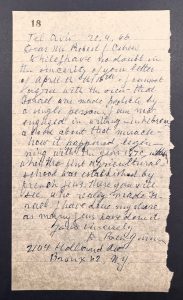On May 9, 1925, the second season of the British Empire Exhibition opened in London, with pavilions from 56 of the 58 territories in the empire.
The Canadian pavilion featured a working model of Niagara Falls and a life-sized sculpture of the Prince of Wales and his horse made out of butter. Canada hoped to encourage people to immigrate, with a special appeal to single young women since so many British men had died in the First World War.
Palestine, then subject to the British Mandate, hosted a pavilion at the insistence of Herbert Samuel, the High Commissioner of Palestine, who convinced the British government that the pavilion would be in its interest. Samuel wrote in this guidebook that through the mandate, Britain “hoped to promote in Palestine both an Arab and a Jewish revival.”
The Palestine Pavilion was designed to bring a Middle Eastern flavour to the fair, with the front representing the Jaffa Gate, and the back, the Damascus Gate of Jerusalem’s Old City. Inside was a reproduction of a typical market street selling wares such as carpets, dried flowers, tanned leather, wine, honey, figs, straw hats, tobacco, chocolate, spices, and, of course, oranges.
The Palestine Pavilion was across the street from the South Africa and East Africa pavilions, right beside Nigeria’s.
Among the advertisements in this guidebook is one for The American-Palestine Real Estate Agency for land transactions throughout Palestine. The ad declares, “This is the Land of the Future… Large tracts have been acquired for building purposes by [the Company] in the most important parts of the country.” It ends with the charge: “Take your chance and buy land to-day.”
Anyone who took that chance (and held on to that property) would today be very happy they did so.
At a time when Israel’s detractors claim that the country is a colonial state, it is important to note that the area that is now Israel was once celebrated as part of the British Empire, making Israel a project of decolonization rather than the opposite.







